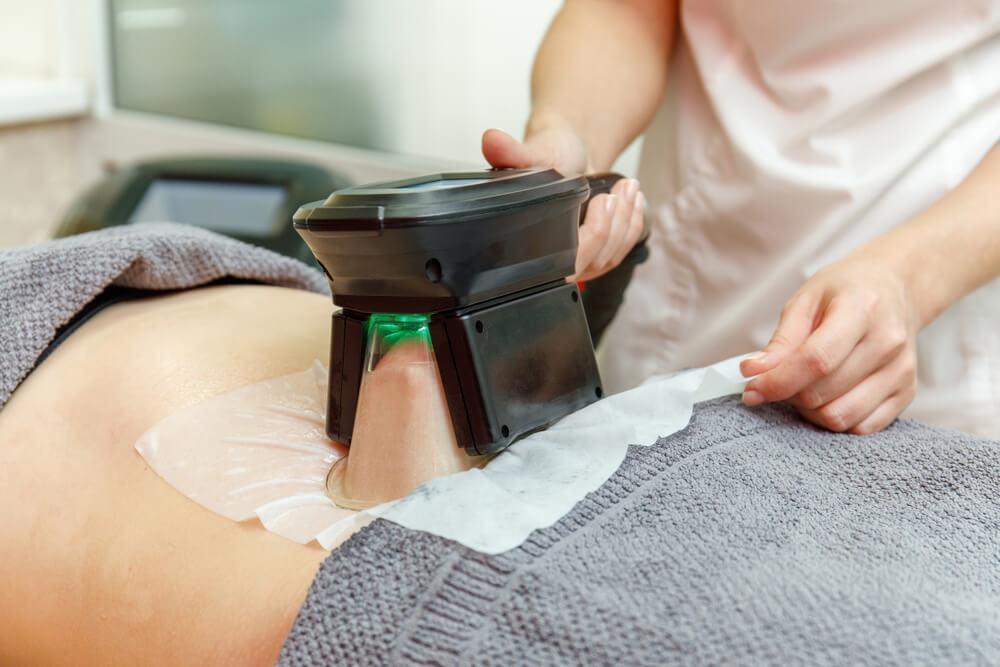Remember when nose jobs were one size fits all? When everyone got the same turned up button on their faces with absolutely no regard for the sizes of their chins or the widths of their foreheads? Times have changed a lot since then and thank goodness for it. Not only are nose jobs more customized than they were some decades ago, but they can also actually be done with no surgery necessary.
Hard to believe we know. Headshrinkers, we’re ok with, nose shrinkers, we’re a little more skeptical of. But judging from the before and afters, (and the words of a few trusted medical experts), non-surgical nose jobs are for real, and they’re far from the only non-surgical cosmetic procedure out there. There are micro-dermabrasions, injectables, chemical peels and laser treatments that cater to almost every cosmetic concern imaginable.
If looking more attractive is looking more attractive to you, you’re not alone. Here are some of the nonsurgical cosmetic procedures that taking the plastic and the surgery out of the plastic surgery procedure.
Non-Surgical Nose Jobs
Ok, so we know what you’re thinking: How can adding to my nose actually make it look smaller? Fillers are bulk increasers by definition, ideally one would think they were the last thing you would want to be injected in your already somewhat indelicate shnozz. Is it possible that adding a substance could subtract from its visual appearance?
A good question indeed. Many candidates for nonsurgical nose jobs have struggled with the same dilemma, but when explained, it does start to make sense. Here’s a little bit about the magic of fillers and how they can take your nose to new dimensions.
How They Work
While non-surgical nose jobs can straighten bumps and curves and make your nose look visibly smaller, they cannot actually decrease the size of your nose. The idea behind non-surgical nose jobs is to add material to the nose to disguise the imperfections around them. One might say the non-surgical procedures fix the symptoms without curing the problem completely. It is also important to note that when the injectable starts to fade, the original nose will start to take shape, which is why regular maintenance is important.

A single session takes about 15 to 20 minutes, during which the site is cleaned and numbed with cream and a professional administers the injection. Then using his or her hands, he or she will distribute the liquid in order to create the desired shape.
Permanent Fillers
Not quite permanent, the term “permanent” is used to distinguish these nose jobs from their temporary or biodegradable cousins, which we’ll discuss more in depth later. Actually, the life expectancy for these fillers is about ten plus years, which is a fair amount of time, provided proper upkeep is practiced regularly.
Permanent fillers are made of synthetic materials, like silicone and polyacrylamide gel (PAAG – not to confused with the PGA tennis tournament. Any Williams sister is a good Williams sister).
The liquid is administered under the skin using a needle and can be applied to the tip or the bridge of the nose. The first visit is the warm up. That’s when the doctor applies a small amount of filler. Later visits will add more substance and corrections will be accordingly. Test runs can be done by injecting a saline shot, the effects of which last a few hours. If you don’t like the result, it’s not like your married to it or anything.
Temporary Fillers
Or shall we say more temporary than the permanent ones, depending on how literal you are? Temporary fillers are made out of materials that naturally occur in humans and animals. While this is the healthier filler alternative of the two, the same traits that make the filler so simpatico with the human body also make them biodegradable, which means the fillers break down over time. Patients concerned with maintaining the results can expect to make frequent appointments.
Temporary fillers are usually made with hyaluronic acid and take about 20 minutes to administer. The biggest advantage of temporary fillers is the lack of telltale signs. Your friends and family will notice improvements but may not be able to pinpoint the source. Sounds like a pretty fulfilling filler.
Non-Surgical Eyelid Lift
If there are two things a woman doesn’t want, one is saggy eyelids and another is a knife anywhere near their eyes. With the non-surgical eye lift, lasers and injections are the new knives and forty is the new twenty. Now, it’s no longer a choice between the lesser of two evils, but rather which kinder gentler procedure is right you. Here’s a look at just a few of the eye-opening choices.
Fractional Laser Treatment
Fractional laser treatment is one of the safest treatments out there, largely because it targets the least amount (a fraction) of skin. In this procedure, lasers beams penetrate to eradicate damaged collagen and elastin, allowing skin with renewed elasticity to grow in its place. The outcome is firm uplifted, youthful eyelids with a quick and painless recovery and, since new collagen continues to form over time, you can expect the results to last several years.
Ultherapy
Tomorrow, tomorrow, I love you tomorrow. With Ultherapy, perfect eyelids are only a day away. Ultherapy is an FDA approved -skin tightening procedure that uses soundwaves to stimulate the body’s own natural healing process. It uses real-time ultrasound imaging to target deep tissues below the skin for even energy distribution and, unlike surgical procedures, gives a subtle and natural looking result. Another advantage of this procedure is how quickly it takes for results to show (30-90 minutes). Talk about taking away the sadness and the sorrow. Plus, the procedure is so quick, you can fit it into your schedule today.
Thermolift
As technology advances, the aging process reverses. What a joy to be alive in the millennium! The newest procedure on the block is the Thermolift, a new generation of radiofrequency that works just like the facelift. The Thermolift is a miracle an instrument that actually simulates the facelift, lifting the soft tissue structure, awakening skin elasticity, and firming the face and body in general. It also works on stretch marks, double chins, and body contouring – we’re currently taking bets on when this modern marvel is going to show up on Amazon. We’ll be placing our orders in advance.
Fat Freezing with CoolSculptor
Don’t judge by its name alone, fat freezing is not quite fat burning’s polar opposite. But when spot training and all else fails, fat freezing can be a very attractive option. Fat freezing targets the stubborn pockets of fat, the fat that doesn’t go away from exercise alone. Bat wings, double chins, love handles, abdomen, inner thighs, and back – there is no bulge the CoolSculptor can’t budge.
Scientifically known as cryolipolysis, the procedure was first developed after doctors found that kids who ate ice pops had less fat on their cheeks. That explains why Shirley Temple was on “The Good Ship Lollipop” and not the “Good Ship Ice Pop” when she was a kid. The procedure uses rounded paddles to freeze the fat and then sucks it away through a lymphatic system.

Keep in mind though, doctors do emphasize that this is not an exercise alternative. According to Manhattan-based CoolSculpting practitioner, Jeannel Astarita, “None of the devices shed pounds.” She explains that muscle outweighs fat and the amount of fat the treatment targets won’t add up to much on the scale. “When you lose what’s spilling over your bra and pants, that’s what really counts,” says she, and we couldn’t agree further.
Botox
Who had it done, who didn’t, and who should? There three categories of people in the botox world, and we all know which one we definitely don’t want to be caught dead under. Botox has been decreasing wrinkles and making forehead furrows disappear for years. Yes, it is a toxin, but we do have to pick our poisons. With more than 6 million people having been treated successfully each year, it seems to be one of the wiser choices.
The treatment only takes a few minutes (they call it the lunchtime facelift for nothing), no anesthesia necessary. It works by paralyzing the underlying face muscles causing them to relax. When the muscles relax, the nerves relax and the tension that causes fine lines relaxes with it. Hence, no more permanent looks of concern, temporarily at least.
While it seems Botox is here to stay, the effects aren’t. Results usually last about three to four months after which the muscle action returns, and more treatment is necessary.
But remember what your mama told you would happen if you kept making that face? Apparently, she knew was talking about. Over time, and with regular treatment, the muscles become trained to relax on their own, and eventually, they do stay that way.
Nonsurgical Permanent Hair Removal
Where once we used razors, now we use lasers. It seems like only yesterday that we threw our disposables razors in the trash for once and for all and left the torturous world of waxing behind. Lasers were the new Nair and a Schick Disposable was only for touch-ups. However, while lasers were painless, and removed hair permanently, another contender soon arose. That was the IPL treatment, which relied on Intense Pulsed Light to zap hair into oblivion. Not sure which will put the end to your hairy situation? Here’s a little breakdown on IPL versus laser hair removal.
IPL Vs. Laser
Both the IPL and the laser work by the same principal. The light energy is attracted by the pigments in the hair and the hair heats up. When the hair is heated, the follicle is damaged. This slows hair growth and with enough treatments will prevent the hair from growing back at all. The difference between the two is the light source that provides the energy.
IPL uses a broad-spectrum light that can treat a large area at once. That means quicker treatment time and a cheaper cost, although you may need more sessions to achieve the results of a laser. One advantage of the IPL is that it can be altered to best suit the types of skin and hair type it is aiming to treat. In other words, it recognizes that all skin and hair is not created equal. (Think hair on your arms vs. hair on your bikini line for a visual reference). It also can be adjusted to treat all types of skin and hair effectively.

Laser treatment, on the other hand, uses, well a laser. The laser focuses light right into the pores of the skin bringing it closer to the follicle for quicker results, doing damage more quickly in a good way. Although the results are more precise than those of the IPL, lasers are better suited to treat darker skin and may not work well on lighter thinner hairs. The job is done in fewer sessions, but the costs can rack up quickly.
And the winner is….
We’ll let you decide. Take your skin type, budget and how long you want to wait to see results into consideration and take it from there.
Just for a quick recap:
- IPL is more affordable, but more treatment may be necessary
- Lasers are more precise because they target individual hairs
- The laser pulses only take a fraction second, so treatment time is fast
- Both can be adjusted to suit a patient’s individual needs
- IPL can target large areas at once
- Because lasers are more precise, they work better on individuals with darker skin tones and may not as effective on thin light hair.
- IPL Devices are available for home use. Click here to check out the Veezy Ultralight on Amazon.






Leave A Comment